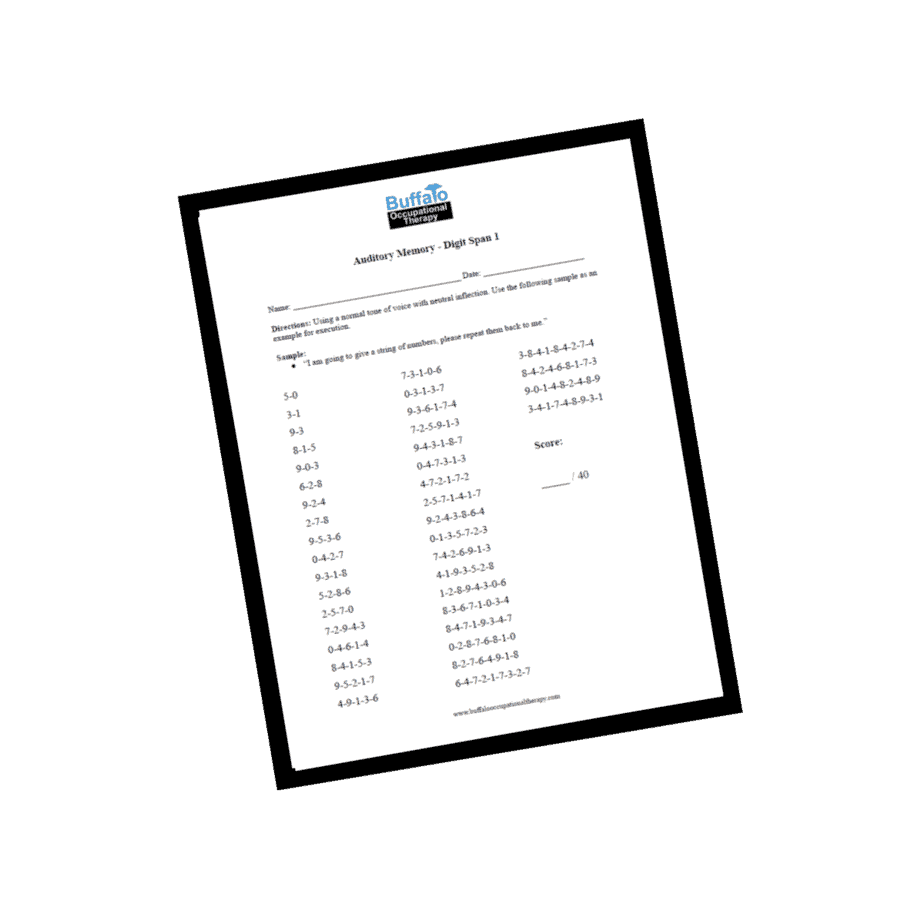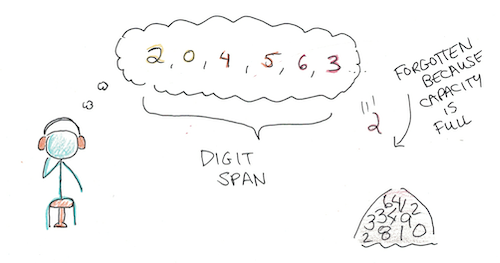
Further studies are required to examine the effects of age and output-modality on these tasks. Discussion & Conclusions: The current results were consistent with those from Waters and Caplan (2003), reporting composite measure increased stabilities and reliabilities for the working memory measures and all of the working memory tasks loaded onto a single factor.

A principal component analysis revealed that the one-factor solution accounted for 66% of the total variance for four different working memory pointing tasks. As short-term memory measures, digit and word forward pointing span measures were highly correlated (r=0.79). Concurrent validity results suggested that the pointing version of the digit span measures shared only 25~40% of the total variance with the standardized measure of the digit span-recall. However, test-retest reliabilities increased up to 0.86 when a composite measure was used with a combination of at least two different tasks. Results The test-retest reliability results revealed that the range of Pearson’s correlation coefficients was 0.43~0.77. Fifty-five normal individuals participated in the study and performed all of the tasks. An alphabet pointing span task and a subtract-2 pointing span measure were developed as working memory tasks. Methods Digit forward and backward pointing span measures were developed by adapting the most commonly used digit forward/backward recall tasks to pointing measures. The specific aim of the study was to examine psychometric properties such as test-retest reliability, concurrent and construct validity, and internal item consistency in newly developed pointing span measures. Digit Span measures verbal short-term memory, defined as the system that allows for temporary storage of information, and is crucial in everyday tasks such.

Most people manage to recap around seven digits. Right afterwards, the test subject has to recall the correct digits in the same order. The current study developed pointing span measures that do not require verbal output and thus can be used to assess short-term and working memory capacities in special populations with verbal-output deficits. Recently, Pisoni and Geers (2000) reported that simple forward digit span measures of verbal working memory were significantly correlated with spoken word. The digit span test is a way of measuring the storage capacity of a person's working memory: A testperson is visually or auditorily exposed to a sequence of digits one after the other. However, there are limitations to the employment of short-term and working memory tasks developed for assessing normal cognitive processing for the evaluation of speech and/or language-impaired clinical populations. The Reliability and Validity of Short-term and Working Memory Pointing Tasks Developed for Clinical Populations with Speech and Language DisordersĬopyright ©2011 The Korean Academy of Speech-Language Pathology and Audiologyīackground & Objectives Short-term and working memory capacity theories have gained considerable attention as underlying cognitive mechanisms, deficiencies in which may account for language processing difficulties in individuals with speech and language disorders.


 0 kommentar(er)
0 kommentar(er)
